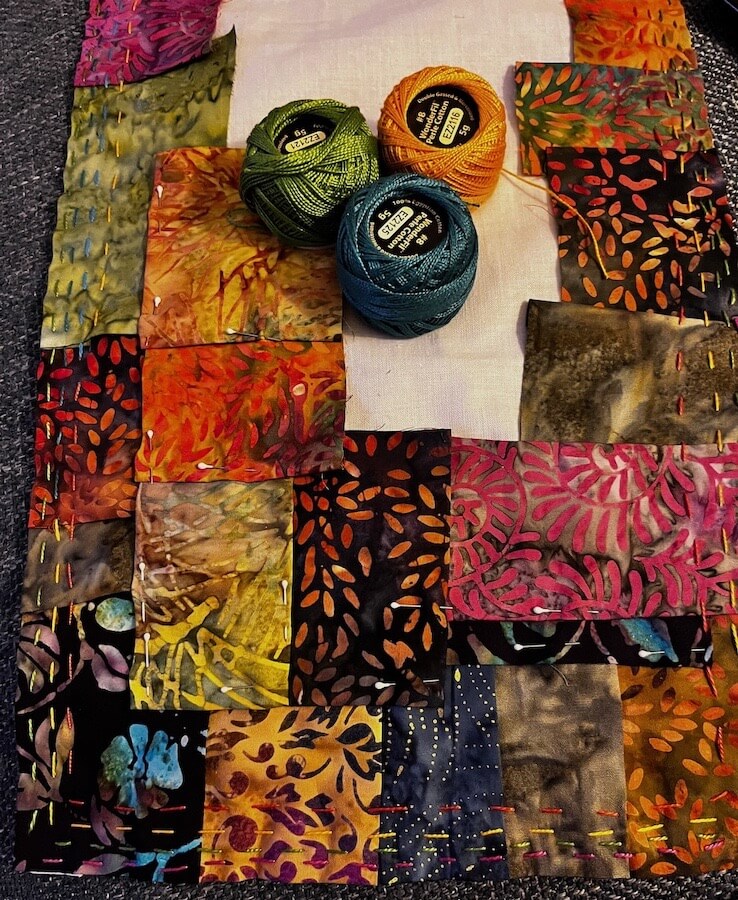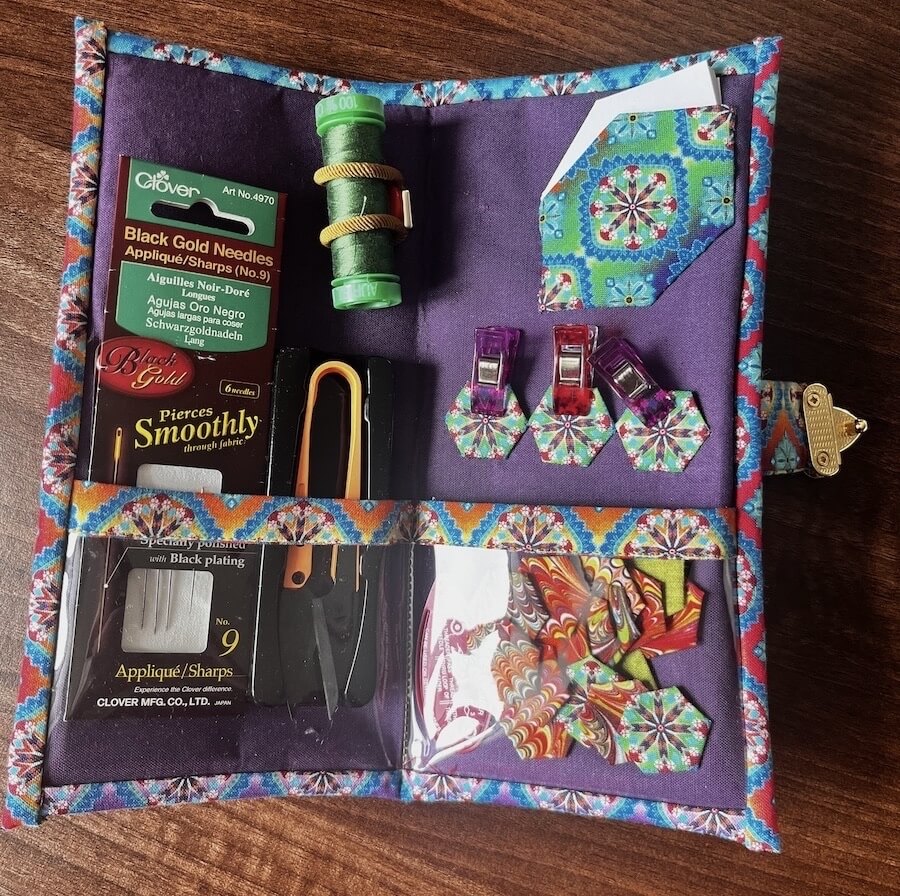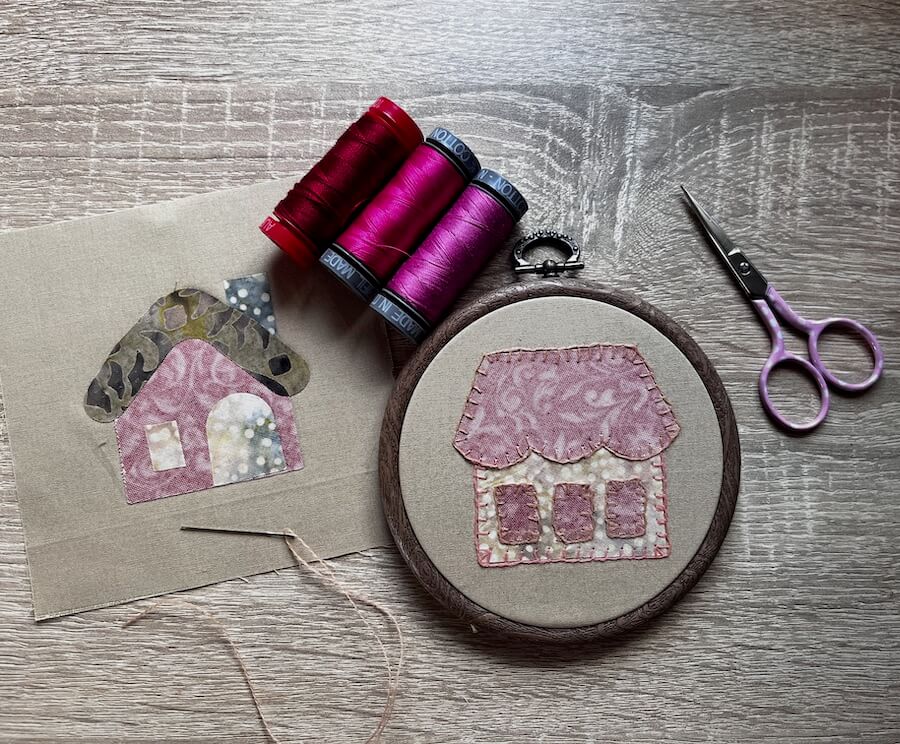Travelling is a wonderful opportunity to explore new places, meet new people, and create lasting memories. But what if you could also indulge in your favourite hobby while on the go?
Hand sewing is the perfect portable craft to bring along on your travels. It’s compact, requires minimal tools, and can be incredibly relaxing. Here’s a guide to help you make the most of hand sewing while travelling.

1. Compact and Portable
Hand sewing projects typically require just a few essential tools: needles, thread, fabric, and small scissors. These items can easily fit into a small bag, making them perfect for carrying in your purse or backpack.
2. Easy to Pick Up and Put Down
Unlike some hobbies that require a lot of setup and space, hand sewing can be done almost anywhere. Whether you’re waiting at the airport, riding on a train, or relaxing at your hotel, you can pull out your sewing and stitch a few lines.
3. Therapeutic and Relaxing
Travel can sometimes be stressful, with long waits and unexpected delays. Hand sewing provides a meditative activity that can help calm your mind and keep your hands busy.

1. Travel Sewing Kit
Invest in a compact travel sewing kit that includes the basics: needles, thread, small scissors, and a needle threader. Some kits also come with a small pin cushion and a few safety pins.
2. Fabric and Patterns
Choose lightweight fabrics that are easy to work with, such as cotton or linen. Pre-cut your fabric into manageable pieces and prepare any patterns you plan to use before you leave.
3. Needle Case
A needle case will keep your needles organised and safe. Opt for a small, portable case that can easily fit into your sewing kit.
4. Thread Organiser
Carry a few spools of thread in basic colours like black, white, and beige. Use a small thread organiser to prevent tangling and keep your threads easily accessible.
5. Thimble
If you’re working on a project that requires a lot of stitching, a thimble can protect your fingers and make sewing more comfortable.

1. Embroidery
Embroidery is an excellent travel-friendly project. You can work on small pieces that fit in a hoop and easily pack a few skeins of embroidery floss in various colours.
2. Quilt Blocks
Bring along pre-cut fabric pieces and hand-sew quilt blocks. Once you have enough blocks, you can assemble them into a quilt when you return home.
3. Small Repairs
Travel is a great time to catch up on mending clothes. Sew on missing buttons, fix hems, or repair small tears in your garments.
4. English Paper Piecing (EPP)
EPP involves wrapping fabric around paper templates and hand-stitching them together. This method is ideal for travel because it’s portable and requires minimal tools.
5. Simple Projects
Consider working on small, simple projects like pin cushions, coasters, or fabric bookmarks. These projects are quick to complete and can be great souvenirs of your trip.
1. Plan Ahead
Before your trip, decide what projects you want to work on and gather all necessary materials. Pre-cutting fabric and organising your tools will save you time and hassle while travelling.
2. Use a Travel-Friendly Bag
Choose a sturdy, portable bag with compartments to keep your sewing supplies organised. A zippered pouch or a small tackle box can be ideal.
3. Be Mindful of Security
When flying, remember that scissors with blades shorter than 4 inches are generally allowed in carry-on luggage, but it’s always best to check the latest airport guidelines. A seam ripper can also be a good alternative to small scissors.
4. Take Breaks
While hand sewing can be a great way to pass the time, make sure to take breaks to stretch and enjoy your surroundings.
5. Connect with Local Crafters
If you have time, seek out local craft shops or sewing groups at your destination. It can be a wonderful way to meet new people and share your love of sewing.
Hand sewing while travelling offers a unique way to enjoy your hobby and create something beautiful while exploring the world. So, pack your sewing kit, choose your favourite projects, and happy stitching on your adventures!